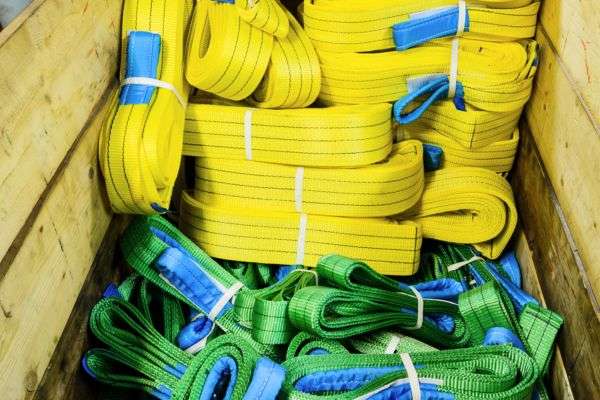100 %

Oct 4,2023
Lifting heavy loads is common in various industries, and using the right equipment is crucial for the safety of both the load and the workers involved. One such essential tool in the lifting industry is the textile lifting sling. In this article, we'll delve into the world of textile lifting slings, exploring their types, advantages, applications, and, most importantly, the safety guidelines that should always be followed.
A key aspect of textile lifting slings is their ability to evenly distribute the load's weight. This prevents concentrated stress on specific points, reducing the risk of damage to both the load and the sling. Selecting the appropriate attachment points and configurations also ensures a secure and stable lift.
One of the significant advantages of textile lifting slings is their lightweight and flexible nature. Unlike traditional metal slings, textile slings are easy to handle and maneuver, reducing the physical strain on operators during lifting operations.
Textile slings are designed to be gentle on the load being lifted. Their soft, pliable surface minimizes the likelihood of surface damage, making them an excellent choice for delicate or finished goods.
Textile lifting slings are versatile and adapt to various load shapes and sizes. Whether you're lifting irregularly shaped objects or more standardized loads, textile slings provide a reliable and secure lifting solution.
Compared to their metal counterparts, textile lifting slings are often more cost-effective. Additionally, with proper care and regular inspections, they can have a long service life, providing excellent value for your investment.
Regular inspections are crucial to ensuring the safety and reliability of textile lifting slings. Visual checks for wear, tears, or other signs of damage should be conducted before each use. Additionally, periodic testing and certification by qualified professionals are essential to identify and address any potential issues.
Selecting the right sling for the job is paramount. Factors such as the type of sling, load weight, and shape should all be considered. Proper load securement and balanced attachment points further enhance safety during lifting operations.
Only trained and certified personnel should operate textile lifting slings. Proper training ensures operators are familiar with the equipment, understand safety protocols, and respond effectively in emergencies.
In the construction industry, textile lifting slings are indispensable for tasks ranging from hoisting steel beams to positioning precast concrete elements. Their flexibility and strength make them a valuable asset on any construction site.
Within manufacturing and warehousing facilities, textile slings are used for loading and unloading heavy machinery, positioning equipment, and managing raw materials. Their adaptability to various load types makes them an essential tool in these environments.
Textile slings find extensive use in the shipbuilding and marine industry, where they are employed in tasks like lifting ship components, handling cargo, and securing vessels during maintenance or repairs.
Textile lifting slings are instrumental in handling heavy equipment across various industries. These slings provide a safe and reliable means of moving large, cumbersome machinery from automotive to aerospace.
Color coding is a crucial aspect of identifying a sling's capacity. Different colors correspond to specific weight-bearing capacities, ensuring operators select the appropriate sling for the load. Understanding these color codes is essential for safe and effective lifting operations.
Textile lifting slings are a versatile and reliable tool in material handling. By understanding their types, advantages, and proper usage, operators can ensure the safety and efficiency of their lifting operations. Safety is paramount; seeking expert advice when needed is a sign of responsible and effective operation.